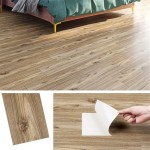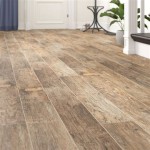Wood Stain Colors for Floors: A Comprehensive Guide
Selecting the appropriate wood stain color for flooring is a pivotal decision that significantly impacts the overall aesthetic and atmosphere of a space. Beyond merely adding visual appeal, the chosen stain color influences the perceived size of a room, its level of warmth, and the way natural and artificial light interact within it. Considering the long-term investment involved in hardwood flooring, understanding the nuances of different stain colors and their effects is crucial for homeowners and interior designers alike.
The availability of wood stain colors spans a wide spectrum, ranging from light and airy shades to deep and dramatic tones. Each color family presents distinct characteristics and advantages, making the selection process both exciting and potentially overwhelming. This comprehensive guide aims to demystify the world of wood stain colors for floors, providing the necessary information to make well-informed decisions that align with individual preferences and design goals.
Understanding the Impact of Light and Undertones
The perceived color of a wood stain is heavily influenced by the ambient light within a room. Natural light, which varies throughout the day and depending on the season, can dramatically alter how a stain appears. Rooms with southern exposure, for instance, tend to have warmer, brighter light, which can enhance the warmth of certain stain colors. Conversely, rooms with northern exposure often have cooler, softer light, which may make certain colors appear more subdued or even slightly grayed.
Artificial lighting also plays a significant role. Warm-toned light bulbs (incandescent or warm LED) will accentuate the warmth in wood stains, while cool-toned light bulbs (cool LED or fluorescent) can give a stain a cooler, more modern look. It is recommended to test stain samples under different lighting conditions to accurately gauge how the color will read in the specific space.
Beyond the surface color, wood stains possess undertones, which are subtle hints of color that lie beneath the primary hue. These undertones can be warm (red, orange, yellow) or cool (blue, green, violet). Understanding these undertones is essential because they interact with the existing colors in the room, including wall paint, furniture, and décor. A stain with warm undertones might complement warm-toned walls and create a cozy and inviting atmosphere. Conversely, a stain with cool undertones could pair well with cool-toned walls and create a more contemporary and sophisticated aesthetic.
It is also important to consider the natural undertones of the wood itself. Different wood species, such as oak, maple, or pine, have inherent colors that will influence the final appearance of the stain. For example, red oak has reddish undertones that will be accentuated by warm-toned stains. Maple, with its lighter and more neutral base, is more versatile and can accommodate a wider range of stain colors.
Exploring Popular Wood Stain Color Families
The realm of wood stain colors can be broadly categorized into several popular families, each offering a unique set of characteristics and aesthetic possibilities. Examining these families individually helps to narrow down the choices and identify the best fit for a specific design vision.
Light and Natural Stains: These stains are designed to enhance the natural beauty of the wood while adding minimal color. They often have a clear or slightly tinted finish that allows the grain and texture of the wood to shine through. Light and natural stains are ideal for creating a bright, airy, and contemporary feel. They are particularly well-suited for smaller rooms, as they help to maximize the perception of space. Woods like maple or birch are especially suited to light stains.
Warm and Golden Stains: This family encompasses a range of colors from light honey tones to rich ambers and golds. Warm stains add a sense of comfort, coziness, and traditional elegance to a space. They are often used in classic and transitional interior designs. Warm stains pair well with warm-toned walls, natural materials, and traditional furniture. Oak is a popular choice for warm and golden stains.
Gray Stains: Gray wood stains have gained significant popularity in recent years, reflecting a growing trend towards modern and minimalist aesthetics. Gray stains can range from light and airy shades of greige (gray-beige) to deep and dramatic charcoal tones. Gray stains create a sophisticated, contemporary, and versatile backdrop for a variety of interior design styles. They pair well with cool-toned walls, metallic accents, and modern furniture. The gray stain can beautifully complement woods like ash or white oak.
Dark and Rich Stains: This family includes colors such as deep browns, espresso, and even black. Dark stains create a sense of drama, sophistication, and luxury. They are often used in formal living rooms, dining rooms, and home offices. Dark stains can make a room feel smaller and more intimate, so they are best suited for larger spaces with ample natural light. Dark stains work well on tighter-grained woods such as walnut, or as a bold statement on oak.
Red and Cherry Stains: Red and cherry stains impart a warm and inviting ambiance reminiscent of traditional and classic aesthetics. These stains accentuate the natural reddish undertones of certain wood species, such as cherry wood itself or red oak. The resulting look is often associated with elegance, richness, and a sense of established comfort. These stains pair well with traditional furnishings, warm lighting, and complementary color palettes featuring earth tones and soft greens.
Factors to Consider When Choosing a Stain Color
Selecting the right wood stain color for floors requires careful consideration of several key factors. These factors extend beyond personal preference and encompass the overall design goals, the existing architectural features of the space, and the practical considerations of maintenance and durability.
Existing Décor and Style: The chosen stain color should complement the existing décor and overall style of the home. Consider the color of the walls, furniture, and other decorative elements. A cohesive color palette will create a harmonious and visually appealing space. If the existing décor is predominantly warm-toned, a warm or golden stain might be a good choice. Conversely, if the décor is cool-toned, a gray or neutral stain might be more appropriate. It’s also helpful to consider the architectural style of the home. A traditional home might benefit from a classic warm stain, while a modern home might be better suited to a gray or dark stain.
Room Size and Lighting: As previously mentioned, room size and lighting are crucial factors to consider. Lighter stains can make a small room feel larger and brighter, while darker stains can make a large room feel more intimate and cozy. Consider the amount of natural light the room receives. Rooms with limited natural light might benefit from a lighter stain to maximize brightness, while rooms with ample natural light can handle darker stains without feeling too closed off.
Durability and Maintenance: The chosen stain color can also affect the perceived level of maintenance required. Lighter stains tend to show dirt and scratches more easily than darker stains. Dark stains, on the other hand, can show dust and pet hair more readily. Consider the lifestyle and traffic patterns in the home when choosing a stain color. If there are children or pets, a medium-toned stain might be a more practical choice as it will camouflage wear and tear more effectively. The finish applied over the stain is also crucial for durability. A durable polyurethane finish will protect the stain from scratches and wear.
Wood Species: The natural color and grain pattern of the wood species will influence the final appearance of the stain. Some wood species, such as maple, have a tight grain and a light color, making them well-suited for lighter stains. Other wood species, such as oak, have a more pronounced grain and a warmer color, making them well-suited for a wider range of stain colors. Always test stain samples on the specific wood species being used to ensure the desired result is achieved. This is because different wood types absorb stain differently, leading to variations in color intensity and overall appearance. For instance, pine, being a softer wood, tends to absorb stain more readily than hardwoods like oak or maple.
Testing Stain Samples: Before committing to a particular stain color, it is essential to test samples on a representative piece of the flooring material. Apply the stain according to the manufacturer's instructions and allow it to dry completely. Observe the color under different lighting conditions and at different times of day. This will provide a more accurate representation of how the stain will look on the finished floor. Furthermore, consider applying the intended topcoat or sealant over the stained sample to assess the final sheen and color depth. This step is critical to achieving the desired aesthetic outcome and avoiding any unexpected surprises after the entire floor is stained.

What Color Should I Stain My Wood Floors

How To Choose The Right Stain For Your Wooden Floors Expert Advice Mr Sander

What Color Should I Stain My Wood Floors

How To Choose Between Hardwood Floor Stain Colors

How To Choose The Right Stain For Parquet Flooring

Wood Floors Stain Colors For Refinishing Hardwood

Choosing Stain Color For Hardwood Floors Indiana Flooring

How To Choose The Right Stain For Your Hardwood Floor Gc Flooring Pros

Hardwood Floor Stain Colors How To Choose Daily Splendor

Staining Hardwood Floors Magnus Anderson Flooring







